The changing process and trend of ground temperature around tower foundations of Qinghai-Tibet Power Transmission line
YanLi Xie, QiHao Yu, YanHui You, ZhongQiu Zhang, TingTao Gou
1. State Grid Qinghai Electric Power Research Institute, Xining, Qinghai 810008, China
2. State Key Laboratory of Frozen Soil Engineering, Northwest Institute of Eco-environment and Resources, Chinese Academy of Sciences, Lanzhou, Gansu 730000, China
ABSTRACT After the construction of Qinghai-Tibet Highway and Railway, the Qinghai-Tibet Power Transmission (QTPT) line is another major permafrost engineering project with new types of engineering structures. The changing process and trend of ground temperature around tower foundations are crucial for the stability of QTPT. We analyzed the change characteristics and tendencies of the ground temperature based on field monitoring data from 2010 to 2014. The results reveal that soil around the tower foundations froze and connected with the artificial permafrost induced during the construction of footings after the first freezing period, and the soil below the original permafrost table kept freezing in subsequent thawing periods. The ground temperature lowered to that of natural fields, fast or slowly for tower foundations with thermosyphons,while for tower foundations without thermosyphons, the increase in ground temperature resulted in higher temperature than that of natural fields. Also, the permafrost temperature and ice content are significant factors that influence the ground temperature around tower foundations. Specifically, the ground temperature around tower foundations in warm and ice-rich permafrost regions decreased slowly, while that in cold and ice poor permafrost regions cooled faster. Moreover, foundations types impacted the ground temperature, which consisted of different technical processes during construction and variant of tower footing structures. The revealed changing process and trend of the ground temperature is beneficial for evaluating the thermal regime evolution around tower foundations in the context of climate change.
Keywords: Qinghai-Tibet Power Transmission line; tower foundation; ground temperature change characteristic; trend
1 Introduction
The Qinghai-Tibet Power Transmission (QTPT)line passes through large areas of permafrost regions,where massive ground ice and ice rich permafrost develops. Because of poor thermal stability and sensitive to environment change of permafrost (Cheng and Zhao, 2000; Hao et al., 2010; Yang and Cheng,2011), the stability of the QTPL is influenced by potential engineering problems, such as frost heaving and thawing settlement, especially in the context of climate change (Yu et al., 2009; Cui et al., 2010; Li et al., 2011). At present, only a few power transmission lines are built in permafrost regions of China, United States and Canada (Yu, 2002; Lyazgin et al., 2004; Jiang and Liu, 2006), with limited reports about the problems of power transmission line in permafrost regions.
Numerous mechanical properties of permafrost relate to temperature. For example, thawing settlement occurs when permafrost is thawing, while the temperature gradient and freezing rates influence the amount of frost heaving of permafrost, moreover, creep modulus and intensity of permafrost are all temperaturesensitive (Ma et al., 1999; Wang et al., 2011; Liu et al., 2012; Liu and Zhang, 2012; Zhao and Zhou,2013). In practical projects, such as the Qinghai-Tibet Highway and Railway, the permafrost below subgrades degenerated because of pavement heat absorption, followed by engineering defects such as thawing interlayers, differential deformation between northern and southern slopes, subgrade settlement, uneven deformation and longitudinal cracks. The fundamental reason causing subgrade defects is increasing permafrost temperature, which in turn results in decreasing permafrost strength. Under different engineering conditions, the heat transfer process and ground temperature changing characteristics differ remarkably. It has been reported that the heat absorption intensity and a heating rate of the ordinary subgrade were three times of that in railway roadbeds in permafrost regions (Yu et al., 2007). In addition, the heat absorption of highgrade highways multiplied than that of ordinary highways, which causes more serious engineering defects(Gu et al., 2010; Yu et al., 2014). Hence, the trend and changing process of the ground temperature around tower foundations in permafrost regions of QTPT will be of great importance in analyzing tower foundation stability and preventing engineering defects in permafrost regions. In this study, combing the observed results of QTPT towers, we analyzed the changing characteristics and tendency of the ground temperature around these tower foundations.
2 Monitoring systems
Comprehensive monitoring systems were installed simultaneously with the tower foundation construction in order to understand the changing process and interactions between tower foundations and the surrounding permafrost. The system consists of ten monitoring towers, which are distributed in the 550 km permafrost region of the Qinghai-Tibet Plateau(Figure 1).

Figure 1 Location of the monitored tower foundations of QTPT
Two adjacent tower foundations, one with thermosyphons and another without, were observed at Xieshui River (490#, 492#) and Chumaer River(571#, 572#), respectively, to compare thermosyphon efficiency (Table 1). The monitoring towers are mainly located in regions with warm and ice-rich permafrost, also, the towers in cold and ice poor permafrost regions were also monitored (Yu et al., 2016).The ground temperature of permafrost around tower foundations and deformation of tower foundations were observed continuously.
Temperature sensors were installed after the footings were embedded. Four footings of each foundation were monitored in consideration of the differences in permafrost conditions, and construction process among each tower footing. Temperature sensor locations are presented in Figure 2. For cast-in-place conical footings and precast footings, considering backfill and construction process, temperature sensors were deployed in the backfill (No. 1 in Figure 2), pit wall of open excavation (No. 2 in Figure 2) and 3.0 m beyond the wall (No. 3 in Figure 2), and observation depth was 4.5, 15.0, and 15.0 m, respectively. As for cast-in-place bulb piles and cast-in-place piles, temperature cables were attached to the foundation surface (No. 4 in Figure 2) and 5.0 m beyond the foundations (No. 5 in Figure 2), and observation depth was the same as the length of the piles and 15.0 m, respectively. Cables around the cast-in-place conical footings and cast-in-place plies were placed during the construction process, which were attached to a steel reinforcement cage before the concrete was cast.Remaining cables were installed by drilling after construction was completed. Thermistor sensors in cables were set every 0.5 m within 0.0 to 5.0 m, and every 1.0 m within 5.0 to 15.0 m. The accuracy of sensors was ±0.05 °C, and the data was collected every two hours by datalogger (manufactured by Campbell CR3000, USA).
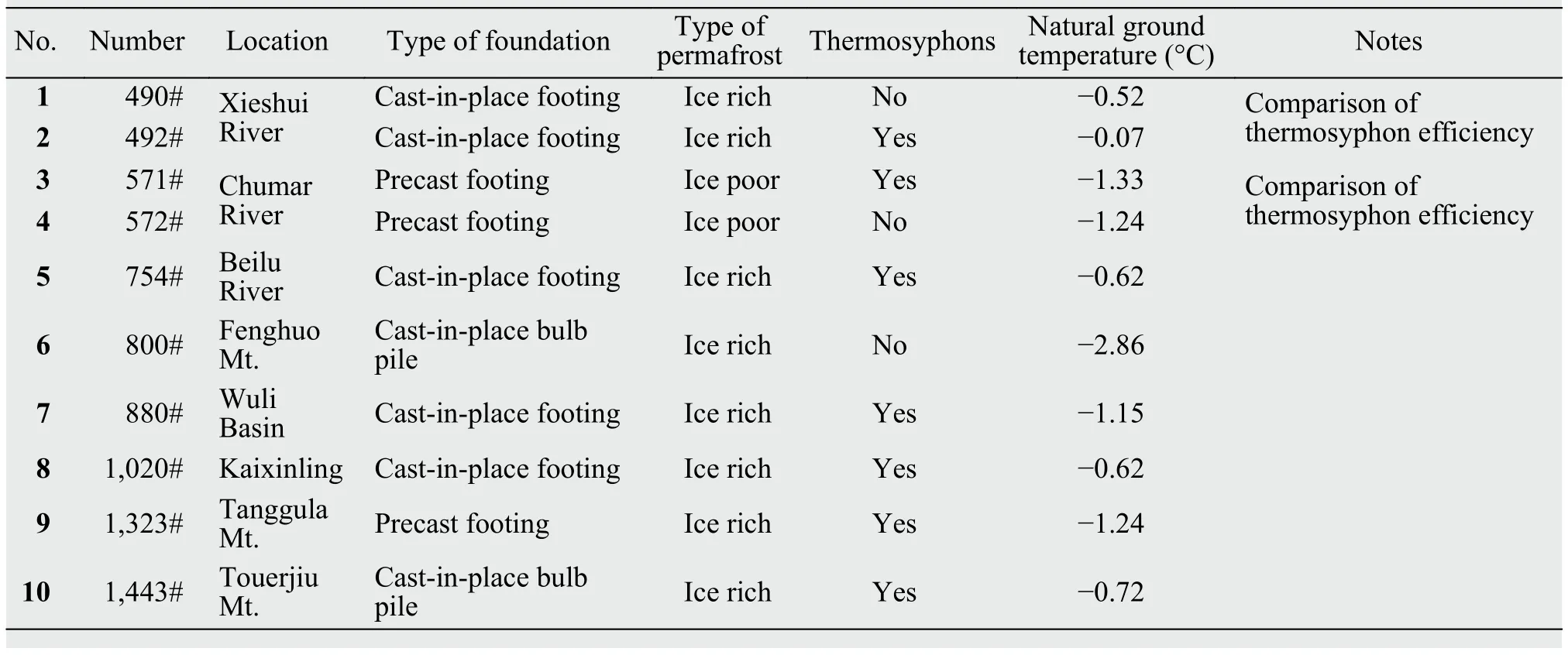
Table 1 List of monitoring towers
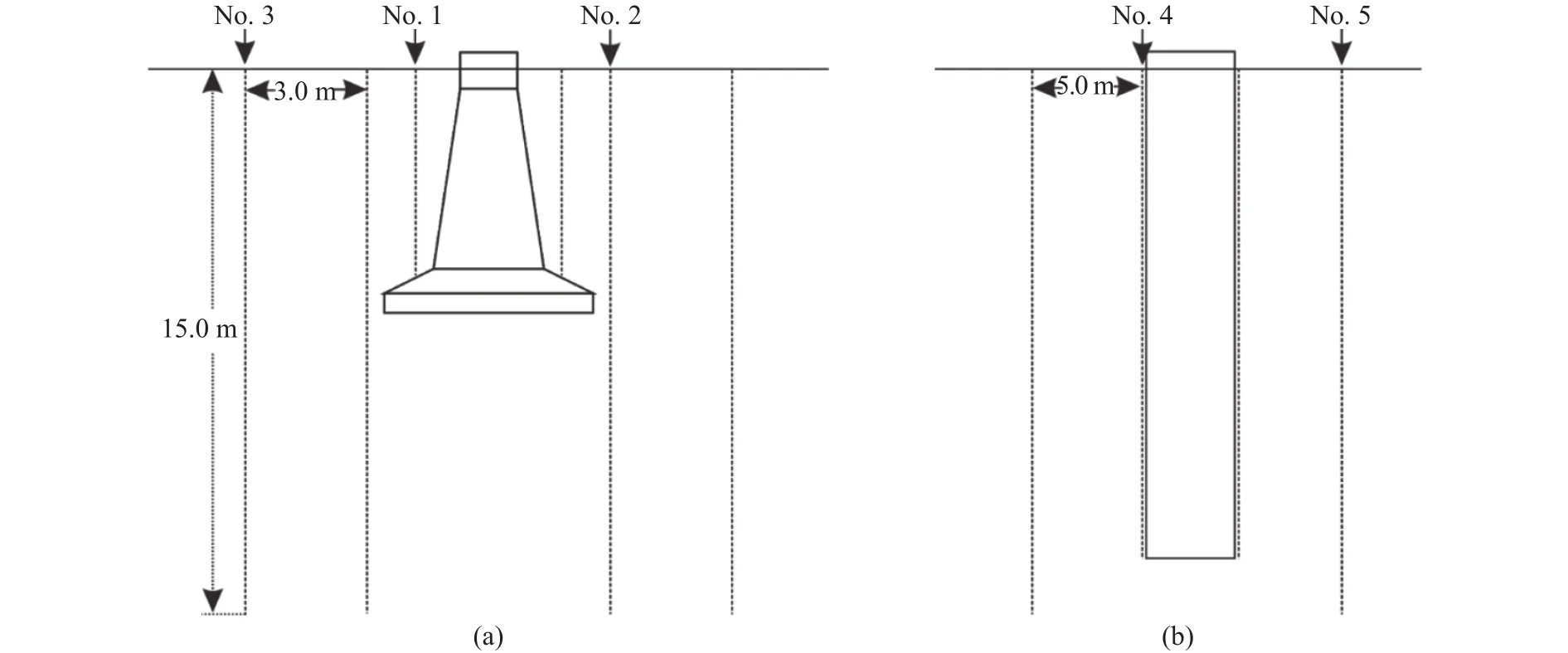
Figure 2 Temperature sensor installation location for cast-in-place conical footings and pre-cast footings (a),and for cast-in-place bulb piles and cast-in-place piles (b)
3 Results and interpretation
3.1 The initial characteristics of ground temperature around tower foundations
The initial ground temperature around foundations changed dramatically because of thermal disturbance to permafrost during construction process,which influenced tower foundation stability. Herein the characteristics of ground temperature changes under different conditions were analyzed, based on the data collected at different tower foundations after the completion of construction.
Construction of the QTPT began in August 2010 and was completed at the end of 2010. After the first freezing period, soils surrounding ten monitoring towers was frozen. The ground temperature near foundations was consistent with that of natural fields within the depth of permafrost table, while below permafrost table, there were small differences in cold and ice poor permafrost regions and greater differences in warm and ice rich permafrost regions, and for the foundations constructed in warm season, the differences was even more prominent.
After the first thawing period (up to October 1,2011), the maximum thawing depth around cast-inplace conical and pre-cast footings was 0.5 m deeper than that in natural fields, but the bottom of the tower footings remained frozen. The thawing depth differed from the permafrost conditions and construction process of each tower foundation, such as the 571#tower, because of heat transfer of the concrete footings and heat accumulation by infiltrating rainfall from cracks in the backfill soil. The maximum thawing depth around tower foundations was 1.0 m deeper than that of natural fields (Figure 3a). The ground temperature around tower footings lowered gradually,and the ground temperature difference between natural fields diminished, due to permafrost thermal diffusion of the permafrost beneath the tower footings. In cold permafrost regions, where the cast-in-place piles were installed, the ground temperature around tower foundations was identical to that in natural fields. For example, the 800# tower in Fenghuo Mt., the ground temperature around tower footings was nearly equal to that in natural fields (Figure 3b).

Figure 3 Contour of ground temperature on October 1, 2011 of 571# tower (a) and 800# tower (b)
3.2 The changing process of ground temperature around tower foundations
Permafrost ground temperature around the tower foundations changed in different tendencies and rates.Permafrost temperature around part of the towers decreased while the rest increased. The differences were probably due to the diversity of the permafrost environment, construction process, types of footings and engineering measures.
For the monitored towers where ground temperature lowered rapidly, the ground temperature at the footing surface decreased to that of the natural field in less than half a year. For example, the monitored tower in Fenghuo Mt., located on a gentle slope, developed ice rich permafrost and the mean annual ground temperature (MAGT) was -2.9 °C. The foundation is composed of cast-in-place piles, embedded at a depth of 8.0 m and built on November 2,2010. Cooled by atmosphere and surrounding permafrost, the footing surface temperature decreased rapidly below a depth of about 2.0 m (Figure 4). The ground temperature at footing surface was higher than that of the natural field on January 1, 2011, while generally equal to that in April 1, 2011. The other observed results in low temperature permafrost regions indicated that the ground temperature around tower footings lowered to basically the same as the natural field two months after construction.
It took about one year where the ground temperature around the tower foundation decreased fast and became identical to that of the natural field. For instance, the tower foundation in Tou'erjiu Mt. was composed of cast-in-place piles and was constructed on December 11, 2010. The tower was located in an ice rich permafrost region with two thermosyphons near each footing, and the MAGT of permafrost was-0.7 °C. Ground temperature observations show that the pile surface temperature was above 0 °C from 4 to 12 m in depth, 23 days after the footings were installed, and the ground temperature changed little along the depth (Figure 5), which suggests thawing of the surrounding permafrost. The thawed soil began to refreeze from February, 2011, and the pile surface ground temperature was roughly the same as that of the natural field up to June 1, 2011, except below 7 m depth.
For some towers in warm and ice rich permafrost regions, because of the thermal disturbance and heat accumulation, the ground temperature decreased slowly. As an example, the tower foundation at Kaixinling was composed of cast-in-place conical footings and embedded at 5.8 m depth. Four thermosyphons near each footing were installed. The MAGT of permafrost was -0.71 °C. The tower foundation construction was completed in mid-September,2010, when the ambient temperature was relative high. Also, because of supra-permafrost water and the pit wall collapsed during excavation, it took 10 days to complete the construction. The pit wall ground temperature was lower than that in the natural field after 2–3 freezing periods (Figure 6). In the first two freezing periods after construction, the ground temperature at a depth of 0 to 7 m at the pit wall was much higher than that in the natural field. For example, the mean temperature difference reached 1.2 °C after the freezing period in 2011 (up to April 1), and lowered to 0.8 °C in 2012. After three freezing periods (up to April 1, 2013), the pit wall ground temperature was lower than the natural field and decreased gradually up to April 1, 2014.

Figure 4 Ground temperature of 800# tower at Fenghuo Mt.
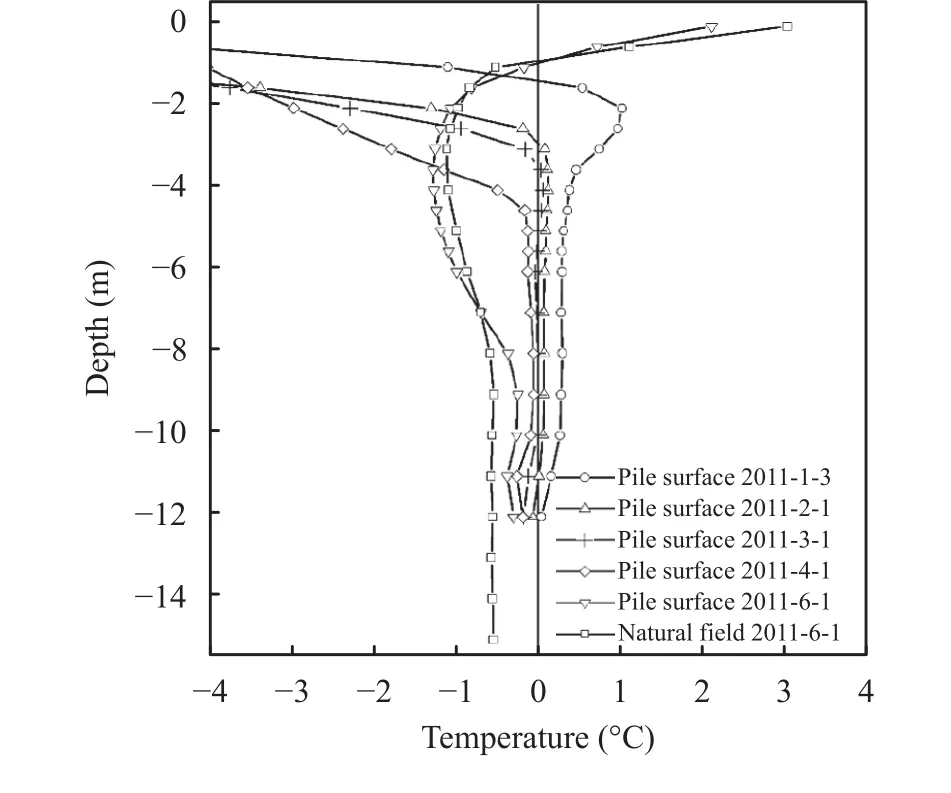
Figure 5 Ground temperature of 1,443# tower at Tou'erjiu Mt.
With regard to tower foundations in warm permafrost regions and without thermosyphons installed, the ground temperature around tower footings rose gradually. For example, no thermosyphons were installed around the 572# tower foundation at Chumaer River high plain, the foundation was composed of precast footings and embedded at a depth of 5.2 m. The permafrost was ice poor and the MAGT was -1.24 °C.Monitoring results show that the pit wall ground temperature was higher than that in the natural field in the first three freeze-thaw processes after the foundation was constructed (Figure 7). The temperature difference between pit wall and the natural field was 0.2,0.4 and 0.5 °C on November 1 of 2011, 2012 and 2013, respectively, and the maximum thaw depth around footings deepened year by year. Additionally,the warming rates at pit wall tended to accelerate.
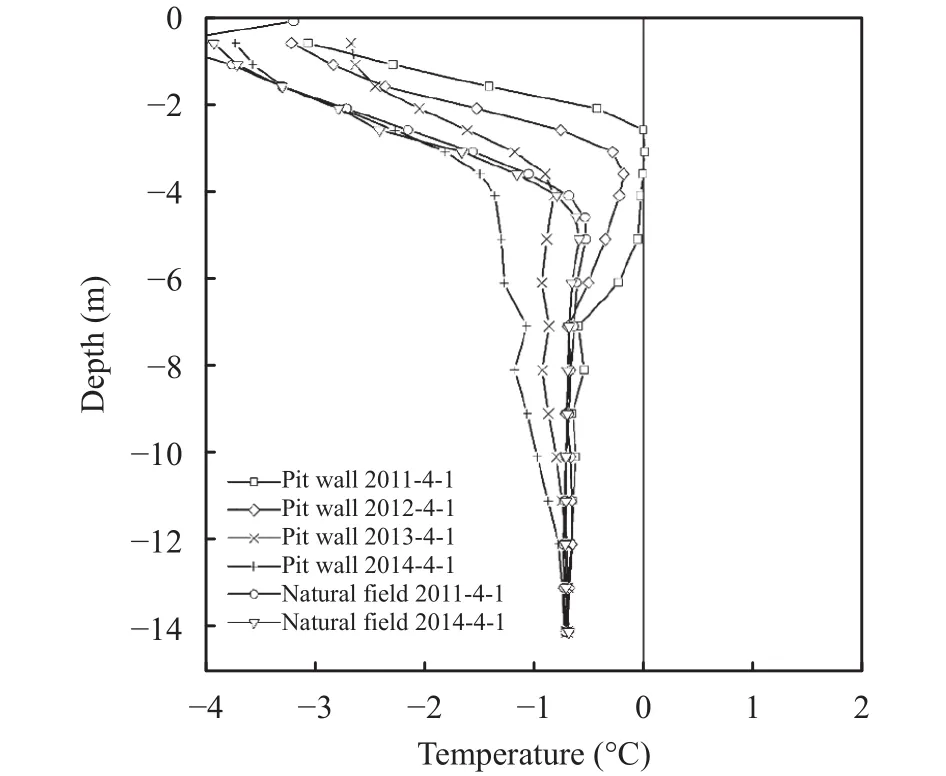
Figure 6 Ground temperature of 1,020# tower at Kaixinling
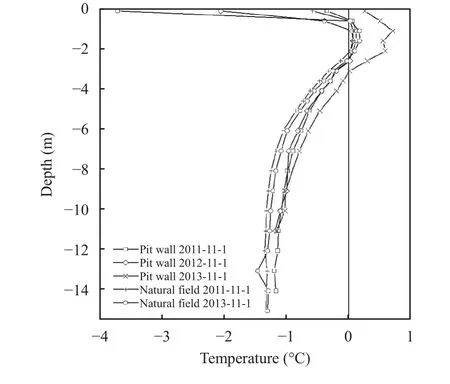
Figure 7 Ground temperature of 572# tower at Chumaer River high plain
3.3 The variation trend of ground temperature around tower foundations
According to the data of 10 monitoring towers, the ground temperature decreased or increased under different engineering specifications and permafrost conditions. Generally, the ground temperature of tower foun-dations with thermosyphons decreased, and increased for tower foundations without thermosyphons.
A significant cooling trend was observed at the 571# tower in Chumaer River high plain, where ice poor permafrost developed and the MAGT of permafrost was -1.33 °C. The foundation, including four pre-cast footings, was embedded at a depth of 5.2 m.Four thermosyphons were installed at the excavation pit wall of each footing. The ground temperature contours illustrated the cooling trend below and around the footings (Figure 8). Having experienced the first freezing process (up to April 15, 2012), the ground temperature near tower footings was markedly lower than in the natural field, and the maximum temperature differences reached about 2 °C at a depth of 3 m.Cooled by the thermosyphons, the ground temperature around the foundation lowered further after the freezing period in 2013, the area of low temperature expanded (e.g., the ground temperature contour of -2 °C),and the depth of cooling area was greater than 15 m.

Figure 8 Contour of the ground temperature of the 571# tower at Chumaer River high plain. (a) April 15, 2011; (b) April 15, 2013
The notable and persistent cooling process around tower foundations made the permafrost more stable,resisting the adverse effects of climate change to some extent. For tower foundations without thermosyphons, because the concrete footings are good conductors of heat, the ground temperature constantly increased. For instance, the ground temperature around 572# tower foundation in Chumaer River high plain was frozen but the ground temperature was still higher than the natural field, and the maximum thawing depth deepened gradually, which indicates that the permafrost degenerated.
4 Discussion
Comparing the ground temperature of ten monitoring towers, the principal factors that influenced the change process and trend of the ground temperature are evaluated as follows:
4.1 The heat accumulation of concrete footings and cooling effect of thermosyphons
The concrete or metal footings of tower foundations intensified the freeze-thaw process and accumulated heat in permafrost regions (Duan and Naterer,2009; Li et al., 2013). Numerical results show that the heat range of the cast-in-place piles was 4–5 times that of the pile diameter, and thaw depth increased over time (Chen et al., 2013; Li et al., 2016). The ground temperature of two foundations without thermosyphons tended to rise, which verified the heat accumulation effect of concrete tower footings. With regard to the remaining eight monitored tower foundations with thermosyphons, the ground temperature around footings was lower than that of the natural field, and decreasing process persisted to date. Thus,the trend of ground temperature change may have been controlled by the application of thermosyphons.
4.2 Ground temperature changing characteristics around tower foundations in different permafrost conditions
The influence of permafrost conditions includes ground temperature and ice content. When the permafrost with different MAGT is disturbed, the ability of heat absorption and dissipation is different. In cold permafrost regions, there was a remarkable temperature difference between the tower foundation and surrounding permafrost, so the accumulated heat (e.g.,concrete hydration heat and molding temperature of concrete) diffused fast, and the ground temperature around tower footings lowered in a relatively short period of time, and the surrounding thawed soil refroze quickly. An example is the tower foundation at Fenghuo Mt. in a cold permafrost region, where it took only about two months for the ground temperature around tower footings to decrease to basically the same as the natural field.
However, massive ground ice may thaw during construction, and heat was released when the thawed water refroze, moreover, the thermal conductivity and temperature gradient was relatively low, which lagged the temperature decreasing process. As an example,the ground temperature at the pit wall of the foundation in Kaixinling (1,020#) maintained at about 0 °C three months after the construction ended (up to December 1, 2011) (Figure 9). The phase change process of water at a depth of -3 to -6 m made the ground temperature decreased slowly, and the thawed soil became frozen up to April 1, 2011. Compared with the ground temperature in the natural field, the pit wall ground temperature lowered slowly below the permafrost table, and was 0.5 °C higher than the natural field at the bottom of the footings up to September, 2011.
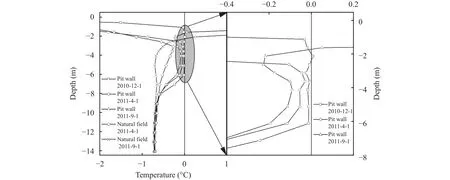
Figure 9 Ground temperature of 1,020# tower at Kaixinling
4.3 The influence of foundation types on ground temperature change process
The impact of foundations types varied in the different construction technologies and heat transfer resulted by the different footing structures. The ground temperature around cast-in-place piles was impacted by the concrete molding temperature and MAGT of permafrost. For the precast and cast-in-place footings,the construction procedures included pit excavation,reinforcing cage hoisting, concrete molding or footings hoisting, then the pit was backfilled and compacted. Increase heat accumulation was caused by large-scale excavation, long construction time in some tower foundations, solar radiation, gushing ground water and hydration heat of concrete. Meanwhile, the embedded depth of tower footings was 4–7 m, which was deeper than the permafrost table on the Qinghai-Tibet Plateau (1.5–3.0 m), and original density of the backfill was difficult to replicate. These factors will increase the heat accumulation around the tower foundation. Thus, the influencing factors are diverse and ground temperature change characteristics are complex.
4.4 Engineering and environmental impacts on the tower foundation construction and thermal regime
In the context of climate warming, the ground temperature around tower foundations without thermosyphons tend to increase, and the thawing depth may deepen further, which probably resulted in thawing settlement and uneven deformation of tower foundations. Hence, mitigated engineering measures need to be employed, based on permafrost conditions and foundation types. Furthermore, the local vegetation and the hydrothermal process were changed during construction, so the periglacial phenomena, such as ground icings and thermokarst lakes may develop which are adverse to tower foundation stability (Guo et al., 2016a,b; You et al., 2016).
5 Conclusions
The ground temperature change characteristics and trend of permafrost around tower foundations of QTPT were analyzed. The results reveal that the soil around tower foundations was frozen after the first freezing period. Having experienced subsequent thawing periods, the ground temperature at the bottom of the footings remained frozen for most of the tower foundations.
The ground temperature changing process and thawing depth were influenced by foundation types,permafrost conditions and construction procedures.Generally, the ground temperature decreased to identical to that of the natural field either rapid, fast,slow for most of the monitored towers, however, the ground temperature increased gradually for some towers.
Among the factors affecting the change process of ground temperature, the application of thermosyphons was the controlling factor. The ground temperature around tower foundations with thermosyphons decreased year by year, while increasing gradually for tower foundations without thermosyphons. Also, the MAGT and ice content of permafrost, and development of groundwater exert an influence on the ground temperature change. The pattern and intensity of thermal disturbances to permafrost were diverse for different types of tower foundations and construction courses.
Acknowledgments:
This work was supported by National Natural Science Fund of China (Grant No. 41401088), State Grid Qinghai Electric Power Research Institute(SGQHDKYOSBJS201600077, SGQHDKYOSBJS 1700068), Funds of State Key Laboratory of Frozen Soil Engineering (Nos. SKLFSE-ZY-17, SKLFSEZT-32).
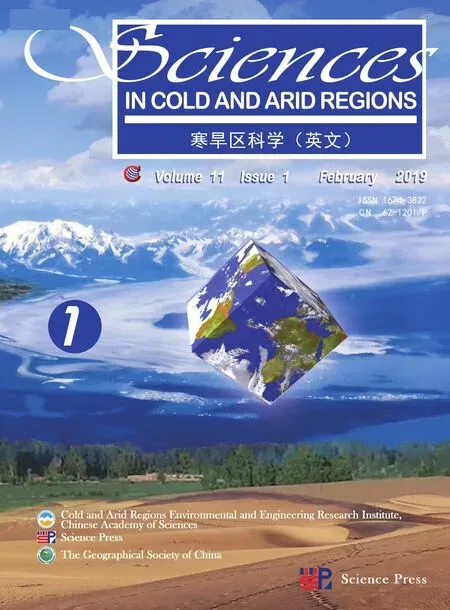 Sciences in Cold and Arid Regions2019年1期
Sciences in Cold and Arid Regions2019年1期
- Sciences in Cold and Arid Regions的其它文章
- Increase in medium-size rainfall events will enhance the C-sequestration capacity of biological soil crusts
- How changes of groundwater level affect the desert riparian forest ecosystem in the Ejina Oasis,Northwest China
- Accumulation and geochemical evidence for the Little Ice Age episode in eastern Antarctica
- Primary investigation of statistical correlation between changes in ice volume and area of glaciers
- Vulnerability and adaptation of an oasis social–ecological system affected by glacier change in an arid region of northwestern China
- The analysis of heat and water fluxes in frozen silty soil
